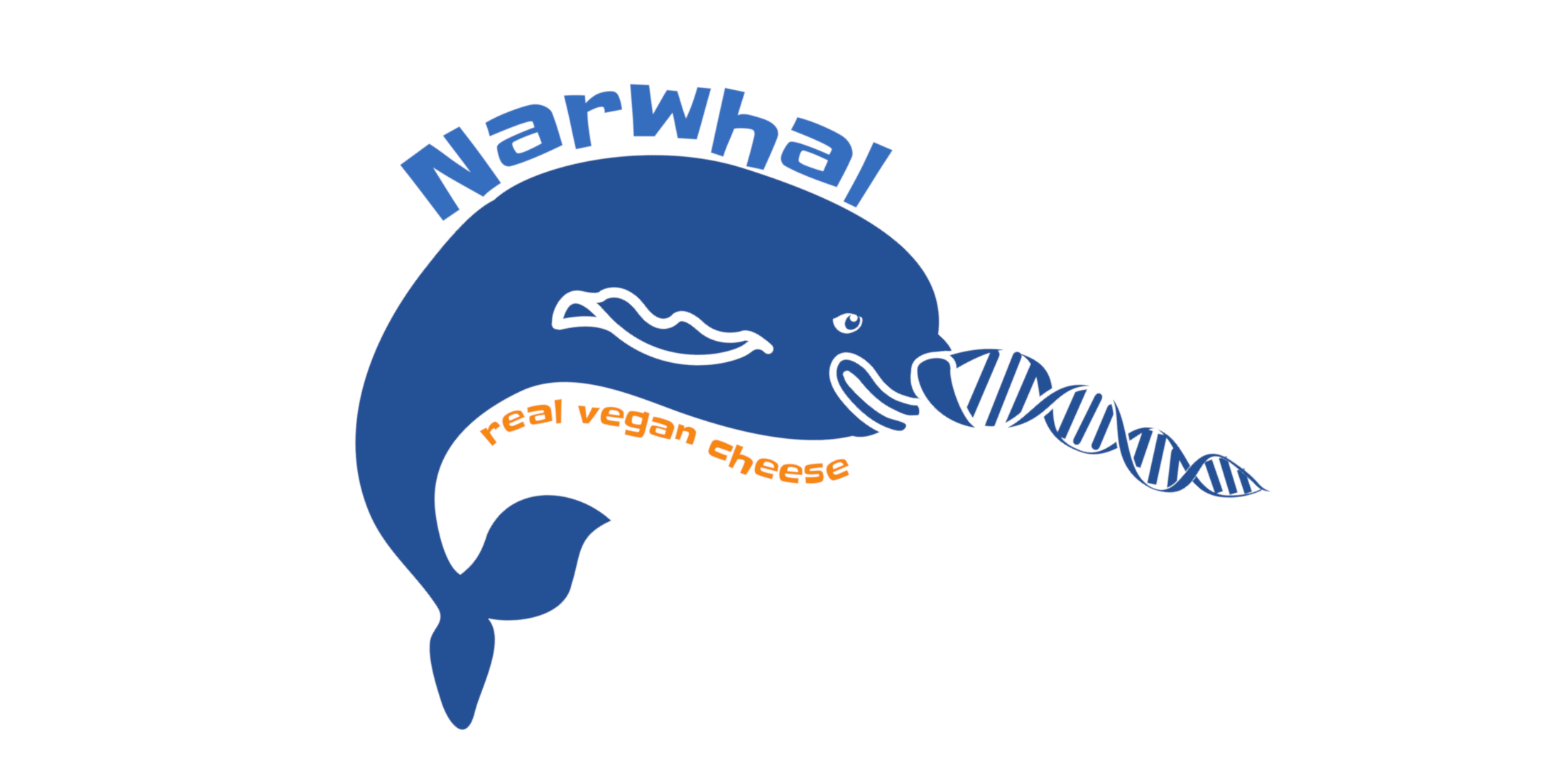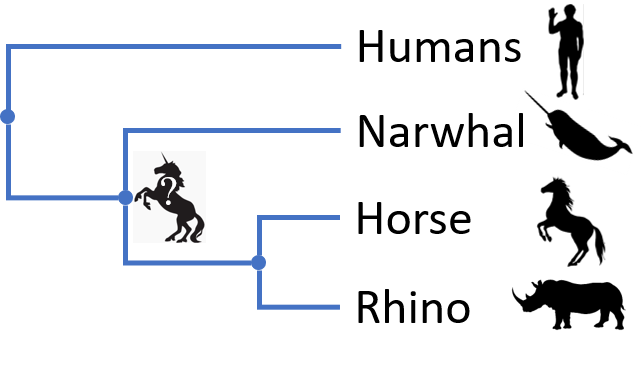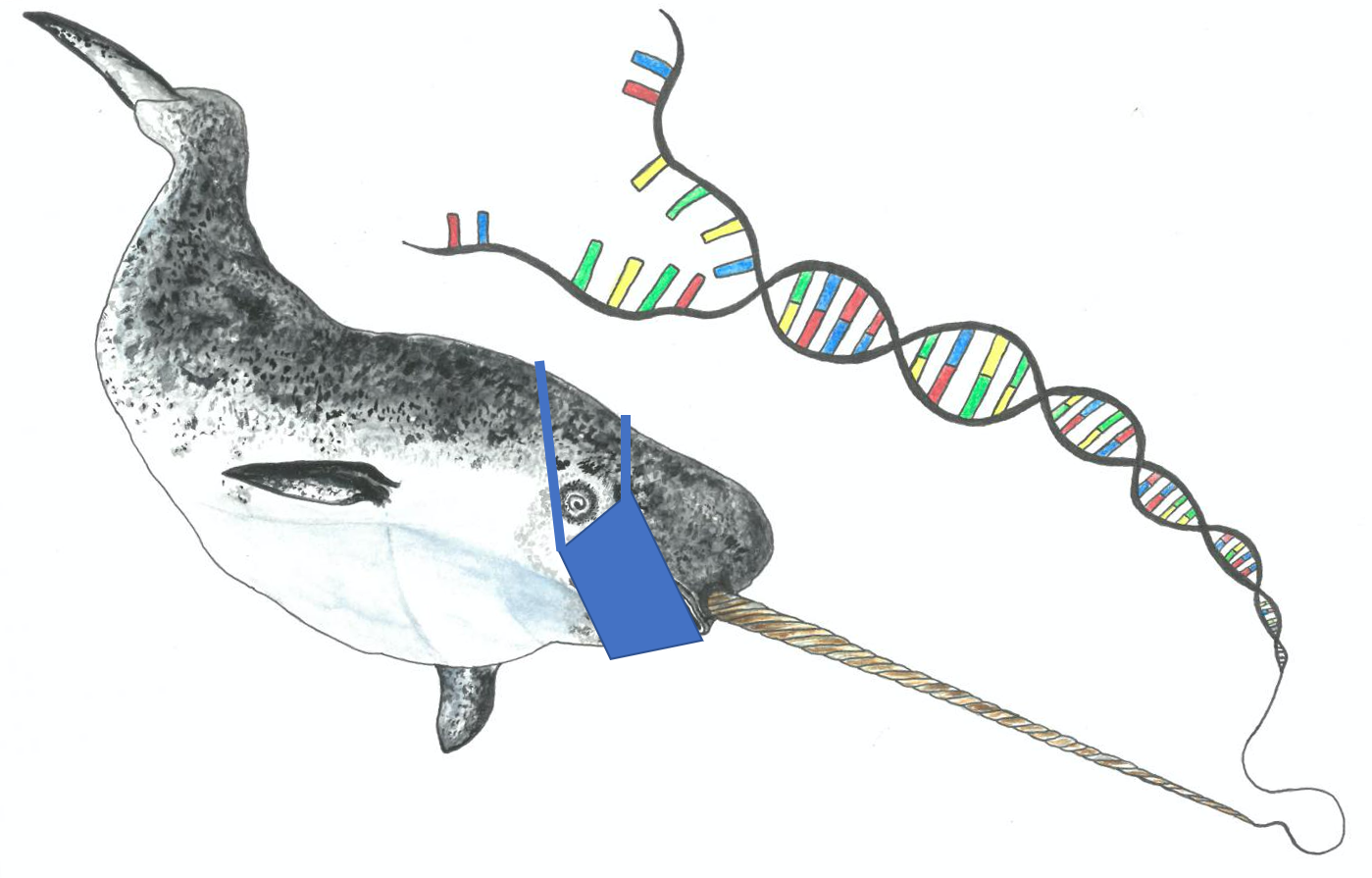Narwhal Cheese
If we can make cheese from any mammal for which we have a genome sequence, what's the weirdest animal we could make cheese from?
Human cheese is an obvious one, and has some obvious benefits in terms of being hypoallergenic. For a while we were joking that we'd be making Craig Venter's cheese, but nowadays you can easily get your own genome sequenced (or maybe get a celebrity-endorsed special-issue cheese?) But let's face it - human cheese has been done before.
What's next? Hairy mammoth cheese for that long-ripening-in-an-ice-cave flavor? Mouse cheese has some nice poetic ring to it. Or go back to our mammalian roots and do a platypus cheese? After long discussion (and some beers) we decided on... Narhwal Cheese!
Yes, Narwhal - the Unicorn of the Sea! For no other reason than that it tickles our funny bone, and what's the point of doing a completely volunteer-run open science project on a shoestring budget if you can't have fun with what you're doing. Besides, if we can make narwhal cheese, and we know we can make horse cheese, then we're one step away from unicorn cheese!
When we first tossed around this idea in 2014, the Narwhal genome hadn't been sequenced yet, but we were in touch with an academic group that was getting ready to send a sampling expedition to the arctic. Eventually, it took until 2019 for the first Narwhal genome to get published.
When the Covid-19 pandemic broke out in 2020, all of our hands-on projects shifted online, and since we were looking for some interesting bioinformatics projects, we decided to take a look at the newly published Narwhal genome. What started on a large six years earlier quickly grew into an interesting evolutionary genomics research project, with two main publishable angles:
1. EVOLUTION OF THE CASEIN GENE CLUSTER IN WHALES AND RELATED MAMMALS
The four casein genes tend to occur within a tight cluster of genes, interspersed with a few non-casein genes. All mammals seem to have at least Beta and Kappa casein, but some mammals seem to have lost Alpha S1 or S2. Let’s investigate how this gene cluster has evolved throughout the whale family and in related land mammals
Approach:
- Locate the casein genes in our species of interest
- Identify the casein gene cluster that contains those genes, up to the next gene upstream and downstream
- Use multiple sequence alignment tools to study how these gene clusters have changed during evolution
- Can we tie any of the major evolutionary changes in the gene cluster to major traits that have been studied during whale evolution
2. EVOLUTION OF TOOTH DEVELOPMENT GENES THAT MAY BE RELATED TO TUSK DEVELOPMENT IN NARWHAL
The narwhal tusk is a giant asymmetrically overdeveloped tooth. If we’re studying evolutionary genomics in Narwhal anyway, why not see if we can identify which genes may be involved in development of its tusk? (Bonus: did you know the casein genes originally developed from tooth development genes early in the evolution of mammals? There is at least on tooth development gene - ODAM - inside the casein cluster.)
Approach:
- Identify tooth development genes - probably in human or rodents, where this has been studied in most depth
- Identify orthologs and paralogs of those tooth development genes in narwhal, it closest non-tusked relative the beluga whale, and at least one other close relative e.g. porpoises, such as dolphin)
- Identify tooth development genes which seem to have diverged significantly in narwhal, compared to beluga and other whales.
- Genes in which the protein coding region has changed significantly
- Genes in which upstream regulatory regions have changed significantly


